Abstract
Acute nasal symptoms are troublesome for patients. In addition, these symptoms are encountered frequently by individuals because of common infectious diseases, especially rhinovirus, giving rise to a ‘common cold’. Acute nasal symptoms include rhinorrhoea, sneezing, nasal itch and congestion. Of these, nasal congestion is the most irritating. Because topical nasal decongestants provide rapid and dramatic relief from these symptoms, especially nasal congestion, they are frequently used and abused by patients. Guidance for indications, choice of most efficacious decongestant and recommendations for limiting side effects are thus essential to be imparted to patients by doctors.
Keywords: acute rhinitis; nasal congestion; topical nasal decongestants.
Introduction
Acute nasal symptoms are particularly troublesome for patients. These symptoms are encountered frequently by individuals because of common infectious diseases, not only those caused by rhinovirus but also because of other respiratory viruses, which give rise to a ‘common cold’. Acute nasal symptoms include rhinorrhoea, sneezing, nasal itch and congestion, and of these, nasal congestion is the most irritating manifestation for patients.
Because topical nasal decongestants provide rapid and dramatic relief from these symptoms, especially nasal congestion, they are frequently used and abused by patients. As such, it is essential that doctors provide guidance regarding their indications, choice of the most efficacious agents and recommendations for limited side effects.
Terminology
It is critical that acute rhinitis is diagnosed correctly and precisely. The updated International Classification of Diseases (ICD)-11, which codes for and describes common conditions of the upper respiratory tract, is useful in this regard, providing clarity on definitions of diseases1 (Figure 1). For example, non-allergic rhinitis is described as ‘an inflammation of nasal mucosa in which allergic mechanisms are not involved’. It also covers different phenotypes listed as ‘non-allergen-induced rhinitis, rhinitis of the elderly, non-allergic non-infectious rhinitis’, etc.
 |
FIGURE 1: International Classification of Diseases-11. |
|
The description of ‘cold’ is provided under the terminology ‘acute nasopharyngitis’ (Box 1).
| BOX 1: International Classification of Diseases-11. Definition of acute nasopharyngitis.1 |
Aetiology of acute rhinitis
Many causes of persistent nasal symptoms are well described and include allergic rhinitis (AR) and vasomotor rhinitis, cystic fibrosis, primary immunodeficiency disorders (PID), primary ciliary dyskinesia, chronic infectious rhinosinusitis and structural conditions. However, underlying chronic rhinitis frequently manifests with acute exacerbations of symptoms that mimic the common causes of an acute rhinitis such as acute nasopharyngitis (Figure 2). It is very important to distinguish an exacerbation of an underlying common condition from a benign viral ‘cold’.
 |
FIGURE 2: Aetiology of acute rhinitis symptoms. |
|
History and examination are important
Any child or adult who presents to a health care provider with acute rhinitis needs to be asked some important questions and must have an appropriate examination (Box 2). Examination must also distinguish whether symptoms are of a new event or represent an exacerbation of an underlying condition.
| BOX 2: A thorough history and examination for acute rhinitis. |
In the case of AR, the facial appearance of the patient is often the clue to the aetiology of acute symptoms (Figure 3). These features include dark rings beneath the eyes (allergic shiners), a nasal crease, double folds of the lower eyelids (Dennie–Morgan folds), open mouth breathing (teeth and gums show) and often allergic mannerisms (such as frequent nasal wiping). Allergic rhinitis may often present with quality of life impairment, including sleep deprivation and attention deficit disorder.2
 |
FIGURE 3: Features of an allergic face. (With permission from the child and parent.) |
|
Treating nasal symptoms
If the nasal symptoms are caused by an underlying condition, then that condition needs to be addressed with both specific diagnosis and directed therapy. An important example is that if the patient has frequent nasal and other problems caused by a PID, then that condition needs a specific diagnosis and therapy if indicated.
As almost all acute rhinitides are troublesome, patients seek a number of over-the-counter remedies. Many of those are ineffective and have the potential to cause unwanted side effects or in fact prolong the duration of nasal congestion.
Some of the appropriate therapies for acute rhinitis, depending on aetiology, include oral and topical antihistamines, topical intranasal steroids and saline (and variants). However, the most effective agent to have rapid relief from symptoms is a topical nasal decongestant, and it is because of the immediate relief provided by this form of therapy that there is a high potential for overuse. The excessive use of topical decongestants may result in side-effects and failure to seek advice for a potential chronic underlying condition. Importantly, antibiotics (topical and systemic) are not indicated for managing acute rhinitis.3 Systemic decongestants, alone or in combination with other medications, have limited value for acute rhinitis and often have unacceptable side effects, especially in children.4 Systemic side effects include nervousness, insomnia, irritability, headache, palpitations and tachycardia. In addition, they may elevate blood pressure and intraocular pressure, and induce urinary obstruction.5
Which topical nasal decongestant?
The most important criterion for selecting a nasal decongestant is evidence for efficacy and safety. The imidazole group of agents such as oxymetazoline and xylometazoline, which have a proven efficacy and safety profile, best fit these requirements (Box 3).6,7,8,9,10,11,12,13,14,15,16
| BOX 3: The ideal topical nasal decongestant should have the following properties. |
Duration of use of topical decongestant
When used alone, topical nasal decongestants may produce rebound vasodilation in some patients after as little as 5-day use. As such, they should not, as a rule, be used for more than 7–10 days.6,17
One additional issue regarding safety of topical decongestants is related to the mode of delivery. Whereas metered dose sprays are safe, at least one study has documented that when using liquid solutions, an excessive volume may be delivered when the bottle is inverted, and therefore the dispenser must be kept upright.18
Patient education
A critical step in managing rhinitis is education of the patient, the public and the provider, including the pharmacist, the primary health care practitioner and even the specialist.
It may also be worthwhile to provide a patient suffering from chronic rhinitis an ‘exacerbation plan’, which provides information as to the use of a topical nasal decongestant. It should also provide instructions as to the administration of the spray. Because most of the congestion occurs at the posterior and lateral side wall of the nose, it should be directed intranasally towards the ipsilateral ear.
The key principles of an education message are listed in Box 4.
| BOX 4: Key educational messages in treating rhinitis. |
Conclusion
Intranasal decongestants are effective in managing the troublesome symptoms of acute rhinitis, either because of a minor viral illness or an exacerbation of an underlying serious chronic condition. They do not however treat the cause, and if used over a prolonged period without further evaluation of the patient, a more important diagnosis could be missed out. Furthermore, they may cause rebound rhinitis medicamentosa.
Acknowledgements
Competing interests
The authors have declared that no competing interests exist.
Authors’ contributions
All authors contributed equally to this work.
Ethical considerations
This article followed all ethical standards for a research without direct contact with human or animal subjects.
Funding information
This research received no specific grant from any funding agency in the public, commercial or not-for-profit sectors.
Data availability statement
Data sharing is not applicable to this article as no new data were created or analysed in this study.
Disclaimer
The views and opinions expressed in this article are those of the authors and do not necessarily reflect the official policy or position of any affiliated agency of the authors.
References
- World Health Organisation. International Coding of Diseases [homepage on the Internet]. 2018 [cited 2019 Oct 12]. Available from: http://id.who.int/icd/entity/1971756453
- Jauregui I, Mullol J, Davila I, et al. Allergic rhinitis and school performance. J Invest Allergol Clin Immunol. 2009;19(Suppl 1):32–39.
- Brink AJ, Cotton MF, Feldman C, et al. Updated recommendations for the management of upper respiratory tract infections in South Africa. S Afr Med J. 2015;105(5):345–352. https://doi.org/10.7196/SAMJ.8716
- De Sutter AIM, Van Driel ML, Kumar AA, Lesslar O, Skrt A. Oral antihistamine-decongestant-analgesic combinations for the common cold. Cochrane Database Syst Rev. 2012;2:CD004976. https://doi.org/10.1002/14651858.CD004976.pub3
- Gentile DA, Pleskovic N, Bartholow A, Skoner DP. Allergic rhinitis. In: Leung DNM, Szefler SJ, Sampson HA, editors. Pediatric allergy: Principles and practice [homepage on the Internet]. 3rd ed. Elsevier; 2016 [cited 2019 Nov 25]. Available from: https://doi.org/10.1016/B978-0-323-29875-9.00024-0
- Luyt D, Green RJ, Alright P, et al. Allergic rhinitis in South Africa – Diagnosis and management. S Afr Med J. 1996;86(10, Pt 2):1315–1330.
- Reinecke S, Tschaikin MMW. Investigation of the effect of oxymetazoline on the duration of rhinitis. Results of a placebo-controlled double-blind study in patients with acute rhinitis. Fortschr Med. 2005;147(3):113–118.
- Druce HM, Ramsey DL, Kamati S, Carr AN. Topical nasal decongestant oxymetazoline (0.05%) provides relief of nasal symptoms for 12 hours. Rhinology. 2018;56(4):343–350. https://doi.org/10.4193/Rhin17.150
- Cartabuke RS, Anderson BJ, Elmaraghy C, Rice J, Tumin D, Tobias JD. Hemodynamic and pharmacokinetic analysis of oxymetazoline use during nasal surgery in children. Laryngoscope 2019;129(12):2775–2781.
- Beck-Speier I, Oswald B, Maier KL, Karg E, Ramseger R. Oxymetazoline inhibits and resolves inflammatory reactions in human neutrophils. J Pharmacol Sci. 2009;110(3):276–284. https://doi.org/10.1254/jphs.09012FP
- Green RJ, Hockman M, Friedman R, et al. Chronic rhinitis in South Africa: Update 2013. S Afr Med J. 2013;103(6):419–422. https://doi.org/10.7196/SAMJ.6972
- Thongngaram T, Assanasen P, Pradubpongsa P, Tantilipikorn P. The effectiveness of oxymetazoline plus intranasal steroid in the treatment of chronic rhinitis: A randomised controlled trial. Asian Pac J Allergy Immunol. 2016;34(1): 30–37.
- Kirtsreesakul V, Khanuengkitkong T, Ruttanaphol S. Does oxymetazoline increase the efficacy of nasal steroids in treating nasal polyposis? Am J Rhinol Allergy. 2016;30(3):195–200. https://doi.org/10.2500/ajra.2016.30.4294
- Liu W, Zhou L, Zeng Q, Luo R. Combination of mometasone furoate and oxymetazoline for the treatment of adenoid hypertrophy concomitant with allergic rhinitis: A randomized controlled trial. Sci Rep. 2017;7:40425. https://doi.org/10.1038/srep40425
- Kishore A, Blake L, Wang C, Ba S, Gross G. Evaluating the effect of Sinex® (0.05% oxymetazoline) nasal spray on reduction of nasal congestion using computational fluid dynamics. J Biomech Eng. 2015;137(8):081011. https://doi.org/10.1115/1.4030825
- De Groot H, Brand PLP, Fokkens WF, Berger MY. Allergic rhino conjunctivitis in children. Br Med J. 2007;335:985–988. https://doi.org/10.1136/bmj.39365.617905.BE
- Hakim M, Walia H, Rafiq M, Grannell T, Cartabuke RS, Tobias JD. Oxymetazoline-metered dose spray: Factors affecting delivery volume. J Pediatr Pharmacol Ther. 2016;21(3):247–251. https://doi.org/10.5863/1551-6776-21.3.247
- Pritchard S, Glover M, Guthrie G, et al. Effectiveness of 0.05% oxymetazoline nasal spray in the treatment of objective nasal congestion demonstrated to 12-h post-administration by magnetic resonance imaging. Pulm Pharmacol Ther. 2014;27(1):121–126. https://doi.org/10.1016/j.pupt.2013.08.002
|